1 Can write numbers and dates, own name, nationality, address, age, date of birth or arrival in the country etc. such as on a hotel registration form.
Shows only limited control of a few simple grammatical structures and sentence patterns in a learnt repertoire.
Pronunciation of a very limited repertoire of learnt words and phrases can be understood with some effort by native speakers used to dealing with speakers of his/her language group.
Can copy familiar words and short phrases e.g. simple signs or instructions, names of everyday objects, names of shops and set phrases used regularly.
Can establish basic social contact by using the simplest everyday polite forms of: greetings and farewells; introductions; saying please, thank you, sorry etc
Uses some simple structures correctly, but still systematically makes basic mistakes - for example tends to mix up tenses and forget to mark agreement; nevertheless, it is usually clear what he/she is trying to say.
Can control a narrow vocabulary repertoire dealing with concrete everyday needs.
Pronunciation is generally clear enough to be understood despite a noticeable foreign accent, but conversational partners will need to ask for repetition from time to time.
Can copy short sentences on everyday subjects - e.g. directions how to get somewhere
Can write with reasonable phonetic accuracy (but not necessarily fully standard spelling) short words that are in his/her oral vocabulary.
Can socialise simply but effectively using the simplest common expressions and following basic routines
Can perform and respond to basic language functions, such as information exchange and requests and express opinions and attitudes in a simple way.
Can handle very short social exchanges, using everyday polite forms of greeting and address. Can make and respond to invitations, invitations, apologies etc
Has sufficient vocabulary to conduct routine, everyday transactions involving familiar situations and topics.
Has a sufficient vocabulary for the expression of basic communicative needs.
Has a sufficient vocabulary for coping with simple survival needs.
Can understand instructions addressed carefully and slowly to him/her and follow short, simple directions.
Can understand enough to be able to meet needs of a concrete type provided speech is clearly and slowly articulated.
Can understand phrases and expressions related to areas of most immediate priority (e.g. very basic personal and family information, shopping, local geography, employment) provided speech is clearly and slowly articulated.
Can generally identify the topic of discussion around her that is conducted slowly and clearly.
Can catch the main point in short, clear, simple messages and announcement.
Can understand simple directions relating to how to get from X to Y, by foot or public transport.
Can interact in a simple way but communication is totally dependent on repetition at a slower rate of speech, rephrasing and repair. Can ask and answer simple questions, initiate and respond to simple statements in areas of immediate need or on very familiar topics.
Can understand everyday expressions aimed at the satisfaction of simple needs of a concrete type, delivered directly to him/her in clear, slow and repeated speech by a sympathetic speaker.
Can understand questions and instructions addressed carefully and slowly to him/her and follow short, simple directions.
Can say what he/she likes and dislikes.
Can use simple everyday polite forms of greeting and address
Can express how he/she feels in simple terms, and express thanks.
Can participate in short conversations in routine contexts on topics of interest.
Can describe him/herself, what he/she does and where he/she lives.
Can read a very short, rehearsed statement - e.g. to introduce a speaker, propose a toast.
Can produce simple mainly isolated phrases about people and places.
Can write a short simple postcard
Has a basic vocabulary repertoire of isolated words and phrases related to particular concrete situations.
Can ask for or pass on personal details in written form
Can write simple phrases and sentences about themselves and imaginary people, where they live and what they do.
Can understand and extract the essential information from short recorded passages dealing with predictable everyday matters that are delivered slowly and clearly.
Can identify the main point of TV news items reporting events, accidents etc. where the visual supports the commentary.
Can follow changes of topic of factual TV news items, and form an idea of the main content.
Can understand the main points of clear standard speech on familiar matters regularly encountered in work, school, leisure etc., including short narratives.
Can follow in outline straightforward short talks on familiar topics provided these are delivered in clearly articulated standard speech.
Can spell his/her address, nationality and other personal details.
Has a sufficient vocabulary to express him/herself with some circumlocutions on most topics pertinent to his everyday life such as family, hobbies and interests, work, travel, and current events.
Uses reasonably accurately a repertoire of frequently used "routines" and patterns associated with more predictable situations.
Can understand very short, simple texts a single phrase at a time, picking up familiar names, words and basic phrases and rereading as required.
Can understand short, simple messages on postcards
Can recognise familiar names, words and very basic phrases on simple notices in the most common everyday situations.
Can get an idea of the content of simpler informational material and short simple descriptions, especially if there is visual support.
Can follow short, simple written directions (e.g., to go from X to Y)
Can understand short, simple texts on familiar matters of a concrete type which consist of high frequency everyday or job-related language
Can understand short, simple texts containing the highest frequency vocabulary, including a proportion of shared international vocabulary items.
Can understand basic types of standard routine letters and faxes (enquiries, orders, letters of confirmation etc.) on familiar topics
Can understand short simple personal letters.
Can find specific, predictable information in simple everyday material such as advertisements, prospectuses, menus, reference lists and timetables
Can locate specific information in lists and isolate the information required (e.g. use the "Yellow Pages" to find a service or tradesman).
Can understand everyday signs and notices: in public places, such as streets, restaurants, railway stations; in workplaces, such as directions, instructions, hazard warnings.
Can identify specific information in simpler written material he/she encounters such as letters, brochures and short newspaper articles describing events.
Can understand regulations, for example safety, when expressed in simple language.
Can understand simple instructions on equipment encountered in everyday life - such as a public telephone.
Can scan longer texts in order to locate desired information, and gather information from different parts of a text, or from different texts in order to fulfil a specific task.
Can find and understand relevant information in everyday material, such as letters, brochures and short official documents.
Can understand clearly written, straightforward instructions for a piece of equipment
Can make an introduction and use basic greeting and leave-taking expressions.
Can ask how people are and react to news.
Can ask people for things, and give people things.
Can handle numbers, quantities, cost and time.
Can ask and answer simple questions, initiate and respond to simple statements in areas of immediate need or on very familiar topics.
Can ask and answer questions about themselves and other people, where they live, people they know, things they have.
Can order a meal.
Can generally understand clear, standard speech on familiar matters directed at him/her, provided he/she can ask for repetition or reformulation from time to time.
Can establish social contact: greetings and farewells; introductions; giving thanks.
Can make and respond to invitations, invitations and apologies.
Can generally identify the topic of discussion around her which is conducted slowly and clearly. .
Can discuss what to do in the evening, at the weekend.
Can make and respond to suggestions.
Can agree and disagree with others.
Can discuss everyday practical issues in a simple way when addressed clearly, slowly and directly.
Can discuss what to do, where to go and make arrangements to meet.
Can generally follow changes of topic in formal discussion related to his/her field which is conducted slowly and clearly.
Can exchange relevant information and give his/her opinion on practical problems when asked directly, provided he/she receives some help with formulation and can ask for repetition of key points if necessary.
Can say what he/she thinks about things when addressed directly in a formal meeting, provided he/she can ask for repetition of key points if necessary.
Can discuss what to do next, making and responding to suggestions, asking for and giving directions
Can indicate when he/she is following and can be made to understand what is necessary, if the speaker takes the trouble.
Can communicate in simple and routine tasks using simple phrases to ask for and provide things, to get simple information and to discuss what to do next.
Can deal with common aspects of everyday living such as travel, lodgings, eating and shopping.
Can get all the information needed from a tourist office, as long as it is of a straightforward, non-specialised nature.
Can ask for and provide everyday goods and services.
Can get simple information about travel, use public transport: buses, trains, and taxis, ask and give directions, and buy tickets.
Can ask about things and make simple transactions in shops, post offices or banks.
Can give and receive information about quantities, numbers, prices etc.
Can make simple purchases by stating what is wanted and asking the price.
Can ask and answer questions about habits and routines.
Can ask and answer questions about pastimes and past activities.
Can give and follow simple directions and instructions e.g. explain how to get somewhere.
Can ask and answer questions about what they do at work and in free time
Can ask for and give directions referring to a map or plan.
Can ask for and provide personal information.
Can make him/herself understood in an interview and communicating ideas and information on familiar topics, provided he/she can ask for clarification occasionally, and is given some help to express what he/she wants to.
Can follow clearly articulated speech directed at him/her in everyday conversation, though will sometimes have to ask for repetition of particular words and phrases.
Can enter unprepared into conversations on familiar topics.
Can follow much of what is said around him/her on general topics provided interlocutors avoid very idiomatic usage and articulate clearly.
Can compare and contrast alternatives, discussing what to do, where to go, who or which to choose etc
Can tell a story or describe something in a simple list of points. Can describe everyday aspects of his environment e.g. people, places, a job or study experience.
Can give short, basic descriptions of events and activities.
Can describe plans and arrangements, habits and routines, past activities and personal experiences.
Can use simple descriptive language to make brief statements about and compare objects and possessions.
Can explain what he/she likes or dislikes about something.
Can describe his/her family, living conditions, educational background, present or most recent job.
Can describe people, places and possessions in simple terms.
Can deliver very short, rehearsed announcements of predictable, learnt content which are intelligible to listeners who are prepared to concentrate.
Can give a short, rehearsed presentation on a topic pertinent to his everyday life, briefly give reasons and explanations for opinions, plans and actions.
Can cope with a limited number of straightforward follow up questions.
Can give straightforward descriptions on a variety of familiar subjects within his field of interest.
Can write short, simple formulaic notes relating to matters in areas of immediate need.
Can write very simple personal letters expressing thanks and apology.
Can take a short, simple message provided he/she can ask for repetition and reformulation.
Can give a simple description or presentation of people, living or working conditions, daily routines. likes/dislikes etc. as a short series of simple phrases and sentences linked into a list.
Can write notes conveying simple information of immediate relevance to friends, service people, teachers and others who feature in his/her everyday life, getting across comprehensibly the points he/she feels are important.
Can write about everyday aspects of his environment e.g. people, places, a job or study experience in linked sentences.
Can write very short, basic descriptions of events, past activities and personal experiences.
Can write a series of simple phrases and sentences about their family, living conditions, educational background, present or most recent job.
Can follow speech that is very slow and carefully articulated, with long pauses for him/her to assimilate meaning.
Can catch the main points in TV programmes on familiar topics when the delivery is relatively slow and clear.
Can follow detailed directions.
Shows good control of elementary vocabulary but major errors still occur when expressing more complex thoughts or handling unfamiliar topics and situations.
Can describe dreams, hopes and ambitions.
Can describe events, real or imagined.
Can briefly give reasons and explanations for opinions, plans and actions.
Can understand straightforward factual information about common everyday or job related topics, identifying both general messages and specific details, provided speech is clearly articulated in a generally familiar accent.
Can generally follow the main points of extended discussion around him/her, provided speech is clearly articulated in standard dialect.
Can follow a lecture or talk within his/her own field, provided the subject matter is familiar and the presentation straightforward and clearly structured.
Can understand simple technical information, such as operating instructions for everyday equipment.
Can understand the information content of the majority of recorded or broadcast audio material on topics of personal interest delivered in clear standard speech.
Can understand the main points of radio news bulletins and simpler recorded material about familiar subjects delivered relatively slowly and clearly.
Can understand a large part of many TV programmes on topics of personal interest such as interviews, short lectures, and news reports when the delivery is relatively slow and clear.
Can follow many films in which visuals and action carry much of the storyline, and which are delivered clearly in straightforward language.
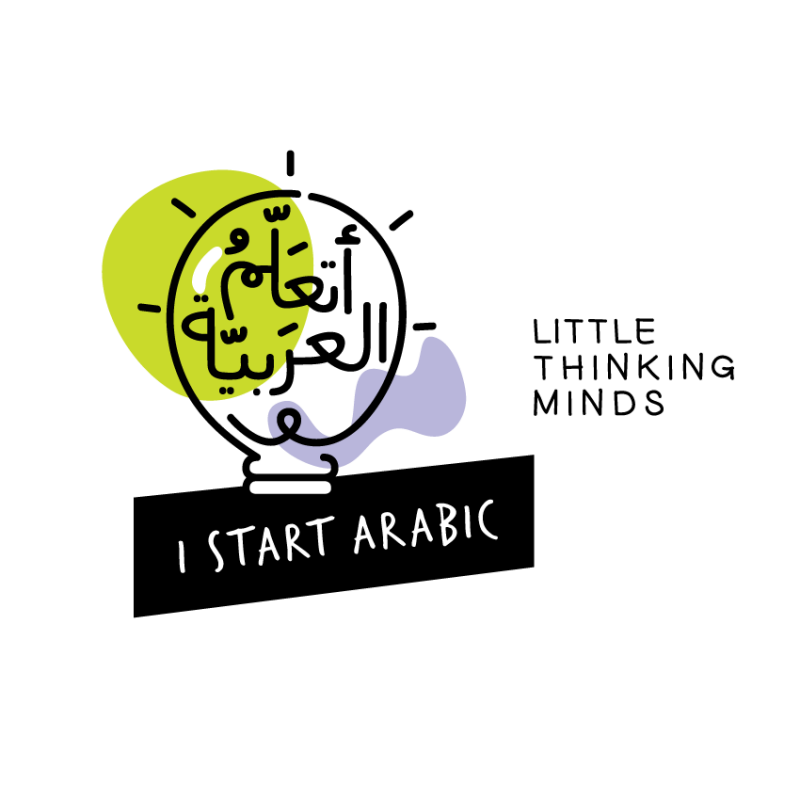


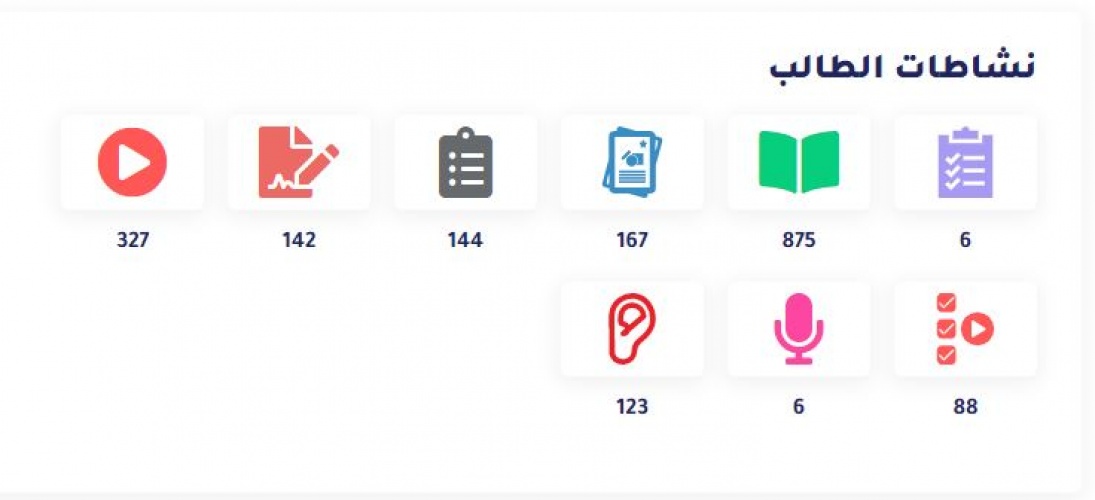
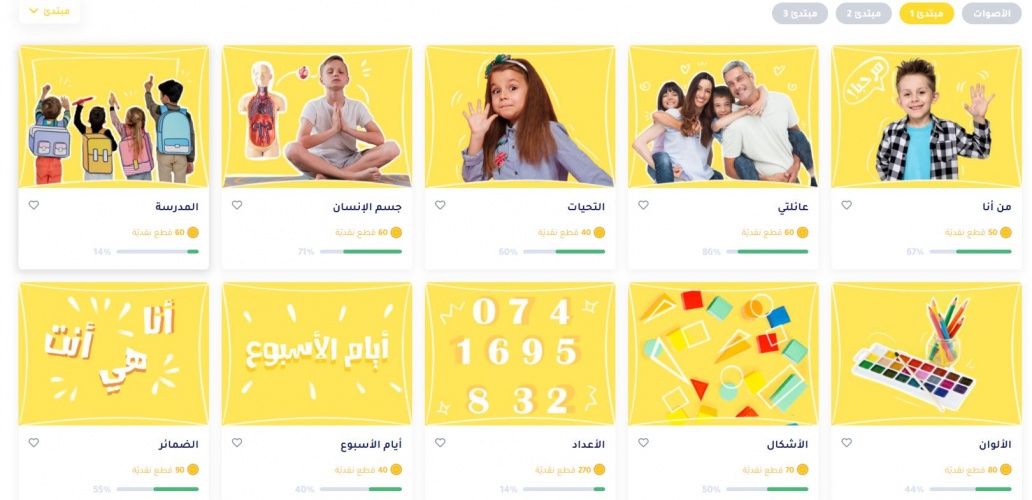
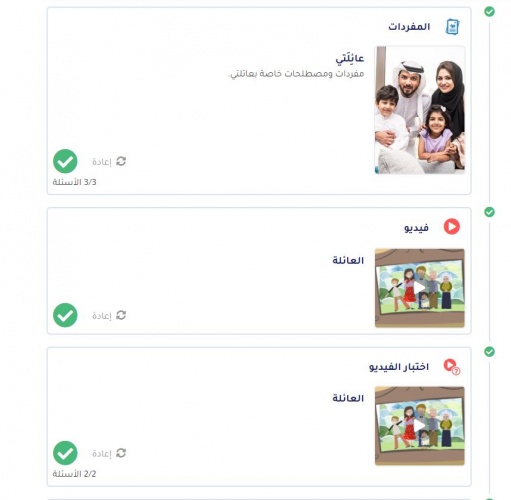
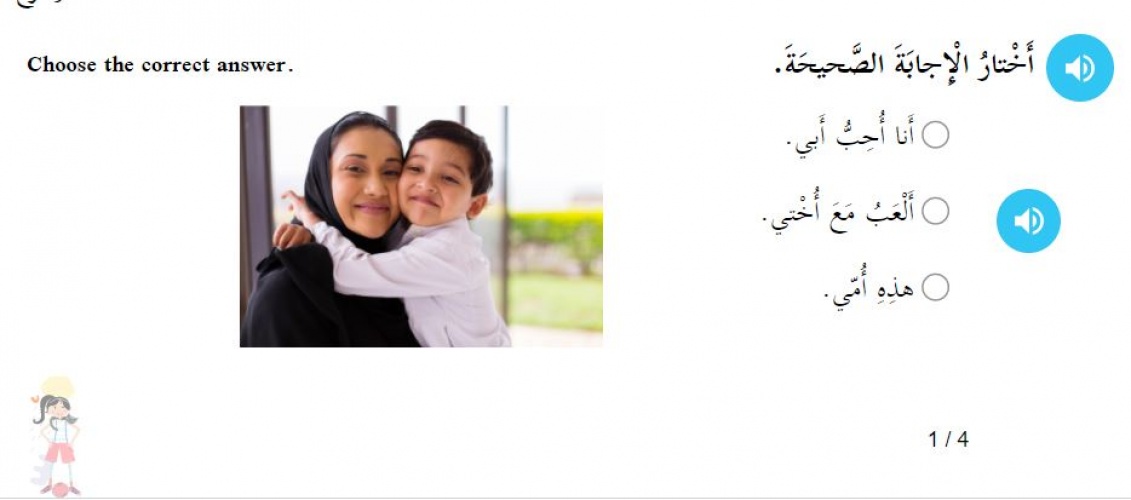
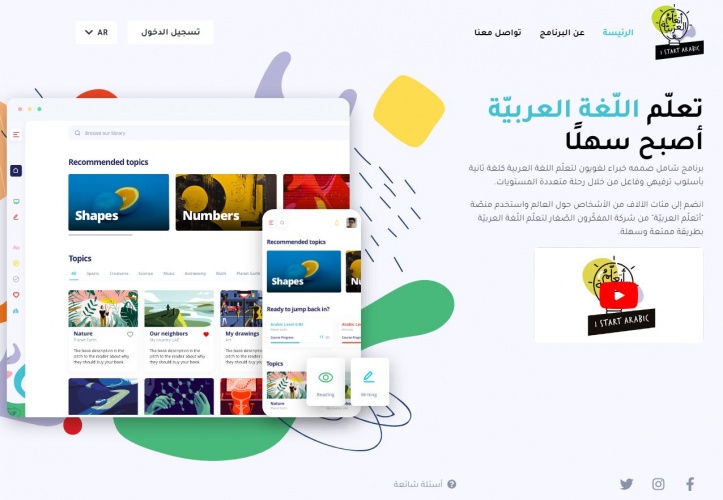
User reviews for I Start Arabic
You need to log in to post a review.